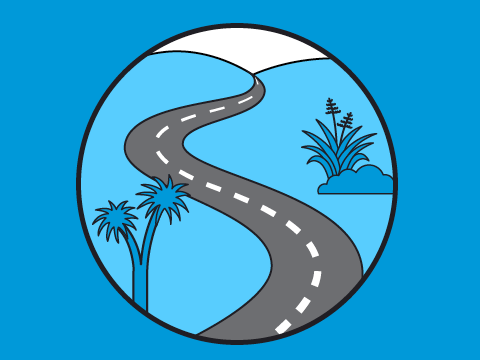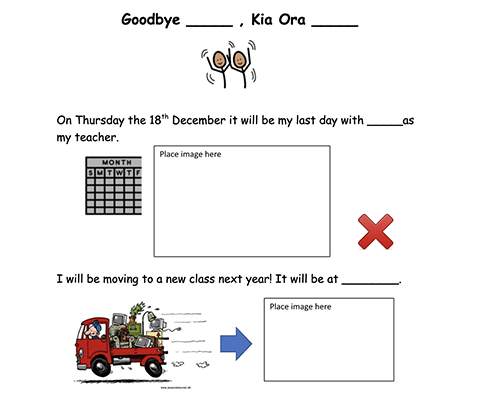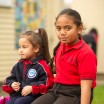Create transition stories | Te waihanga kōrero whakawhiti
After observing ākonga, and before their first visit to the new school, create a transition story about where they are going.
On this page:
On this page:
Current page section: Create transition stories | Te waihanga kōrero whakawhiti
Go to top of current page: Create transition stories | Te waihanga kōrero whakawhiti
Go to top of current page: Create transition stories | Te waihanga kōrero whakawhiti
Go to top of current page: Create transition stories | Te waihanga kōrero whakawhiti
"Mauri tū, mauri ora"
An active soul is a healthy soul.
Why this matters | Te take
Why this matters | Te take
Transition stories are a powerful visual tool for ākonga, helping to build confidence and provide a clear understanding of what to expect in their new learning environment.

Source: Ministry of Education | Te Tāhuhu o te Mātauranga
Create a transition story | Waihangahia he kōrero whakawhiti
Create a transition story | Waihangahia he kōrero whakawhiti
- Create a transition story that appeals to the interests and strengths of ākonga.
- Use as many visual models as possible, which includes: videos, photographs, visual images of ākonga and the new teaching team.
- Offer a transition booklet with photos of the classroom, staff, and daily routines.
Offer a range of transition resources and social stories | Ngā rauemi whakawhiti, kōrero pāpori hoki
Offer a range of transition resources and social stories | Ngā rauemi whakawhiti, kōrero pāpori hoki
Develop a range of social stories or visual guides to help ākonga become familiar with the new environment, such as:
- timetables
- lunch breaks
- moving around the school
- drop-offs in the morning
- pick-ups in the afternoon.
Transition booklets | He puka whakawhiti
Transition booklets | He puka whakawhiti
Some transition stories can be made into digital or hardcopy booklets that ākonga can access anytime. They can take these to their new school at transition visits. It will help them feel safe and secure in their new environment.

Source: S. Cotching
Useful resources | He rauemi
Useful resources | He rauemi

Transition video example
An example of how some ākonga feel about the transition to secondary school.
Publisher: Institute for Social Justice at YSJU

Transition social story example
An example of how to use visual images to illustrate moving from one class year to the next.
Publisher: Ministry of Education NZ
Next steps
More suggestions for implementing the strategy “Develop ākonga partnerships | Te mahi tahi me ngā ākonga”:
-
Current page Create transition stories | Te waihanga kōrero whakawhiti
Return to the guide “Te Ara Ako – Learning pathways in times of change”
How to use this site
Guide to Index of the guide: Te Ara Ako – Learning pathways in times of change
Understand:
Strategies for action:
-
Nurture whānau partnerships | WhanaungatangaShow suggestions for Nurture whānau partnerships | Whanaungatanga
-
Develop ākonga partnerships | Te mahi tahi me ngā ākongaShow suggestions for Develop ākonga partnerships | Te mahi tahi me ngā ākonga
- Get to know ākonga | Te mōhio ki ngā ākonga
- Explore learning environments | Te ao o ngā ākonga
- Create transition stories | Te waihanga kōrero whakawhiti
- Embed familiar supports | Ngā taituarā e mōhiotia ana
- Enable social supports | Ngā taituarā pāpori
-
Prepare your environment | Te whakarite wāhi akoShow suggestions for Prepare your environment | Te whakarite wāhi ako
-
Working as a team | He whānau kotahi tātouShow suggestions for Working as a team | He whānau kotahi tātou

